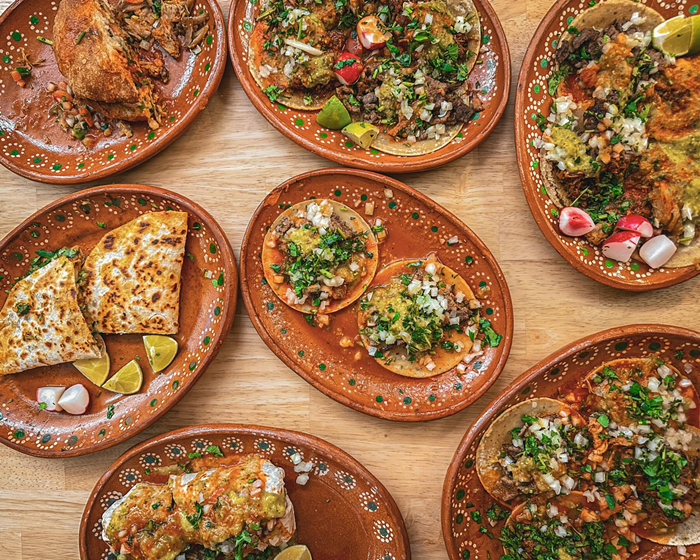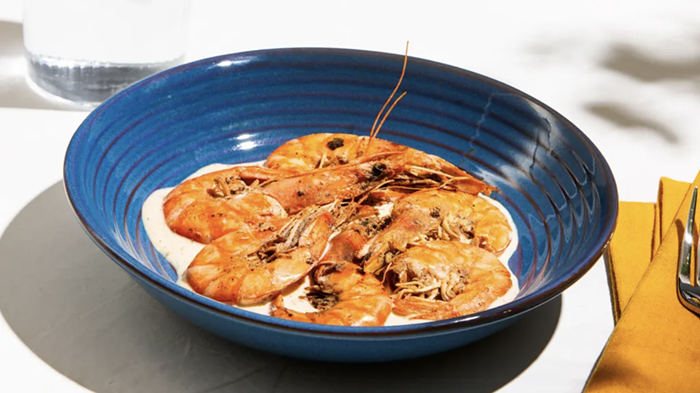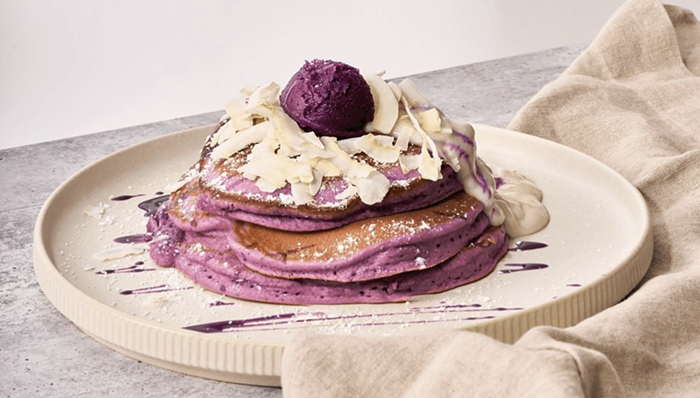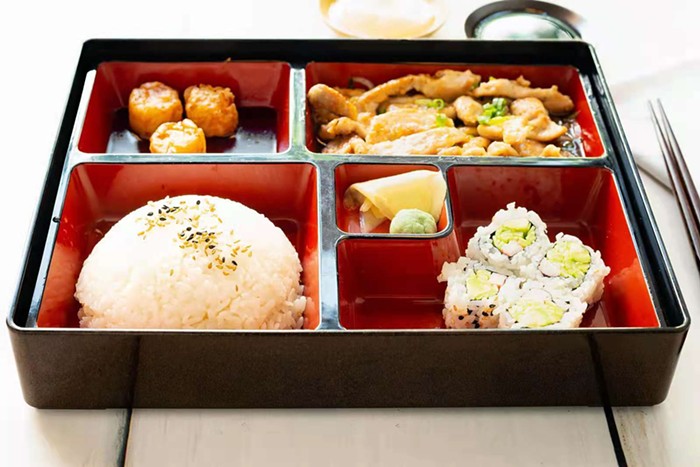
When I was a student in Catholic school, being disruptive was not considered a good thing. It was something that got you marched up several flights of stairs to meet with a stern, white-mustached principal who could induce searing guilt with nothing more than a forceful, pointed glare. But now, being disruptive is super cool. Disruptive people sit on bouncy balls instead of boring office chairs and crowd-source funding for the next game-changing app. And now, disruption has come to the world of dining.
Dinner Lab is a subscription-based pop-up dining service that flips the traditional "dinner out" on its head by showcasing the talents of up-and-coming chefs for adventurous, moneyed diners. The company—which recently expanded to Seattle from LA and New York—gives subscribers access to events throughout the year. In Seattle, the annual fee is $175. A different local guest chef curates each dinner, which subscribers can buy tickets to for an additional $65 to $75. The dinners are held in venues not designed for culinary pursuits, to further shake up the dining experience.
My preconception of the whole affair was that it was another way for rich people—developers clad in blazers, jeans, and band T-shirts—to buy their way into the “underground” dining scene. Their main pre-event publicity was, after all, an article on GeekWire. After attending Dinner Lab’s launch event on February 27—a “celebration of all things PNW” helmed by chef Daniel Stoller at the Makers Space—I learned that my preconception wasn’t all that wrong, but that that was a really good thing. Watching a couple of IT professionals timidly approach an oyster swimming in rich, funky miso-sake butter—pushing aside the seasoned, julienned kale atop the bivalve to examine the morsel before resigning themselves to it and diving in—was delightful. MFK Fisher would have been moved.
Dinner Lab’s stated goal is to subvert the fine-dining experience, to get people to try stuff they might not order at a restaurant, to bring attention to hardworking sous chefs and lead line cooks, and to encourage people from different walks of life to mingle. As for the first goal, they succeeded mightily. Dinners include a questionnaire designed to give feedback to the chef and the company as to the success of the food and the experience. One of the questions, a particularly good one, is “Would you order this dish in a restaurant?” My girlfriend and I, along with the developers across from us, predominantly circled N. But those dishes we indicated a predilection against were also some of the dishes we ended up enjoying the most.
For example, I was very interested in a turkey neck rillette with cranberry confit, Aquavit mustard, and puffed rye berries. But I was very skeptical about gravlax with mizuna pesto, roasted beet cake, sunchoke puree, hazelnuts, and a mizuna salad, because dishes with upward of six ingredients tend to be overwrought and ultimately discordant. I’m also not a huge fan of experimental beet preparations, and I find sunchokes to be a little bland.
While the Aquavit mustard and the puffed rye berries in the rillette dish were both novel and awesome, the turkey neck rillette was woefully under-seasoned and incapable of standing up to the tart, intense cranberry confit. It also came in an inch-thick portion about the diameter of a compact disc, with only a tiny piece of toast to pile it on. The dish, taken as a whole, failed.
The gravlax, on the other hand, defied my expectations. The disparate elements of the dish blended seamlessly—the mizuna pesto folding into the slightly smoky sunchoke puree to provide a perfectly smooth sauce in which to dip the pliant, silky beet cake and excellently seasoned gravlax. The mizuna salad, with its fiercely acidic dressing, provided a perfect counterpoint to the dish's smoother, more subdued elements without overpowering them. Topped with crunchy crumbled hazelnuts, it was a rare delight. But it was most certainly something I would have skipped over if I saw it on a restaurant menu.

As for the drinks, that essential lubricant of dinner companionship, they were plentiful, frequently replenished, and delicious. We were treated to an aridly dry concoction of gin, St Germain, and lavender-seed-infused cucumber puree upon entry, which was followed by a refreshingly sour Moscow Mule with the oyster, a few glasses of drinkable wine, and a glass of petit Syrah that did a delightful dance across my taste buds when paired with perfectly braised lamb with white beans. The beans were laced with some coffee-infused colatura, an Italian fish sauce derived from the garum favored by the ancient Romans—another welcome innovation on Stoller’s part.

As for the second goal—to bring attention to sous chefs and lead line cooks—it’s too early to say whether Dinner Lab succeeds. The guest chef, Danny Stoller, wasn’t really a guest, having recently been hired by Dinner Lab as the permanent chef de cuisine of the Seattle market. But he is a Seattle native and an alumnus of such notable local spots as Revel, Tilth, and LUC. And though he said he signed on with Dinner Lab less to pursue his own cuisine than to develop his management skills and do a bit of traveling, he did mention several guest chefs he’d worked with in other cities who could legitimately be described as up-and-coming, including a line cook in Colorado whose employer would only give him the night of the event off, requiring Stoller and his crew to supervise all the prep work and hope the guy showed up ready to go.
The third goal, to get people from different realms to sit down at the same table and socialize, was a little more suspect than the others—not surprising given the not-insignificant subscription fees. Of our eight dining companions, seven could be reliably classified as well-off. We were joined by the two IT professionals, an event planner for Microsoft, and a smattering of lawyers. They were politely but obviously surprised to learn that my girlfriend and I worked in the service industry and were sitting at the table instead of clearing plates from it.
While Dinner Lab doesn’t really democratize pop-ups on the attendee side, they did succeed in disrupting one thing: my preconceived notions about people with tech money. It’s easy to bash techies and those who profit peripherally off of them, but it’s a lot harder to do so when you’re sitting across the dinner table from them. It was certainly a welcome reminder that even people with scads of money are still people.
Also, about the price: Considering the amount of booze I managed to consume, $75 would barely have scratched the surface had I been at a normal restaurant. If one is willing to overlook, for the sake of adventure, the occasional off dish, the value is absolutely phenomenal (keeping in mind, of course, the annual subscription fee). Still, it's fine dining, a world generally reserved for those with plenty of disposable income. Considering the experience as we walked along the Spokane Street Bridge the next day, my girlfriend and I agreed that we would definitely go to another one, pausing for a moment and then simultaneously adding, “if we could afford to.”


















